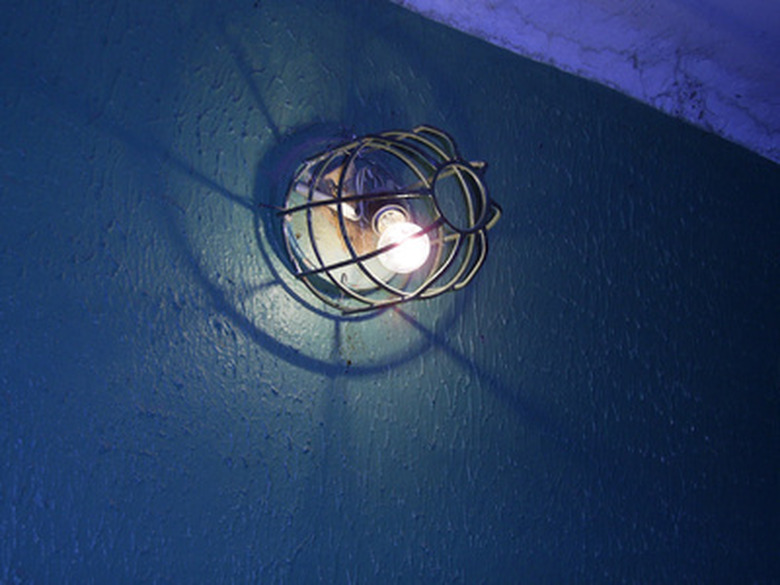How To Make A Electrically Conductive Liquid
Students often love science projects, especially when they illustrate intangibles like conductivity. Creating conductive liquids shows students that materials with a certain chemical makeup conduct electricity. Mixing up your own electrically conductive liquid shows how electrons move through materials. After the experiment, students discuss what they discovered, cementing the concepts in their memories.
Step 1
Fill a large glass jar with about a pint of warm vinegar. You may heat the vinegar in the microwave or simply set it in the sun for an hour or two. It doesn't have to be boiling hot, just warm to the touch.
Step 2
Add 1/4 cup of salt to the vinegar. Stir the mix with a long wooden spoon until the salt dissolves completely. The salts present in the vinegar plus the additional salt should create a very conductive liquid.
Step 3
Set two 9-volt batteries side-by-side so the positive terminal of one and the negative terminal of the other are facing up. Wrap a piece of electrical tape around the middle of the batteries, securing them together.
Step 4
Place a steel paperclip across the positive terminal of the right battery and the negative terminal of the left battery, positioning it like a bridge across the batteries. Tape it down with another piece of electrical tape. Flip your new battery pack over so you can see the other end of both batteries. Tape the end of an alligator clip wire to each remaining terminal.
Step 5
Dangle the loose end of one alligator clip wire into the vinegar solution. Clip the loose end of the other wire to one of the clips on your lightbulb holder. These flat, plastic light sockets hold low-watt lightbulbs for science experiments.
Step 6
Clip a third alligator clip wire to the second clip on your lightbulb holder and dangle the other end of the wire in the vinegar solution. This should complete the circuit and make the lightbulb glow.
Things Needed
- Large glass jar
- 1 pint warm vinegar
- 1/2 cup salt
- Long wooden spoon
- Two 9-volt batteries
- Electrical tape
- Steel paperclip
- Alligator clip wires
- Lightbulb holder with lightbulb
TL;DR (Too Long; Didn't Read)
Try different solutions like ordinary water, water and salt, vinegar alone, vinegar with sugar and salt with sugar. Discuss what happens with each solution.
Cite This Article
MLA
Shoop, Megan. "How To Make A Electrically Conductive Liquid" sciencing.com, https://www.sciencing.com/make-electrically-conductive-liquid-7712455/. 24 April 2017.
APA
Shoop, Megan. (2017, April 24). How To Make A Electrically Conductive Liquid. sciencing.com. Retrieved from https://www.sciencing.com/make-electrically-conductive-liquid-7712455/
Chicago
Shoop, Megan. How To Make A Electrically Conductive Liquid last modified August 30, 2022. https://www.sciencing.com/make-electrically-conductive-liquid-7712455/
